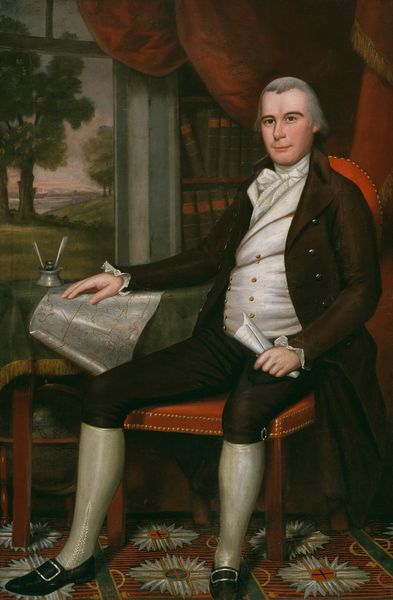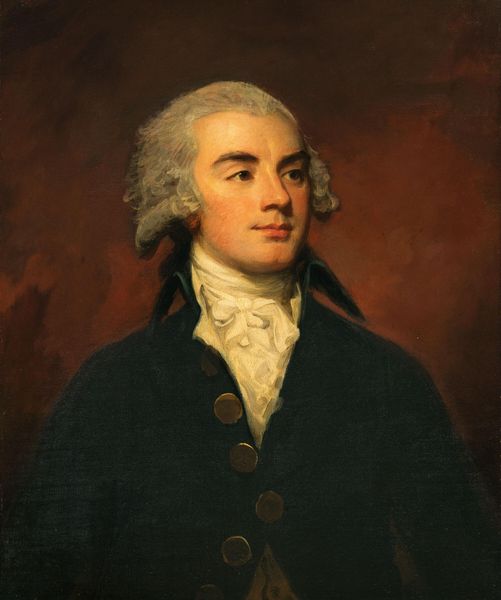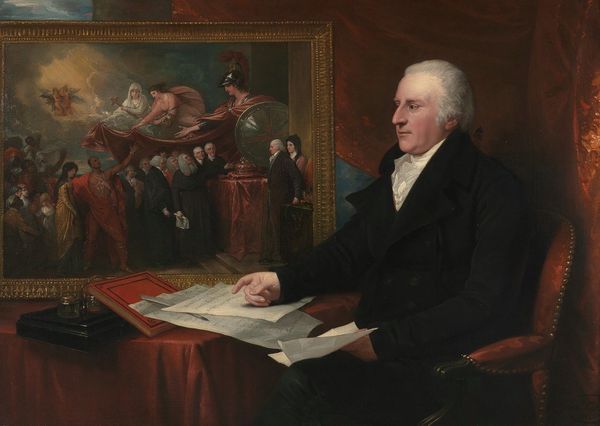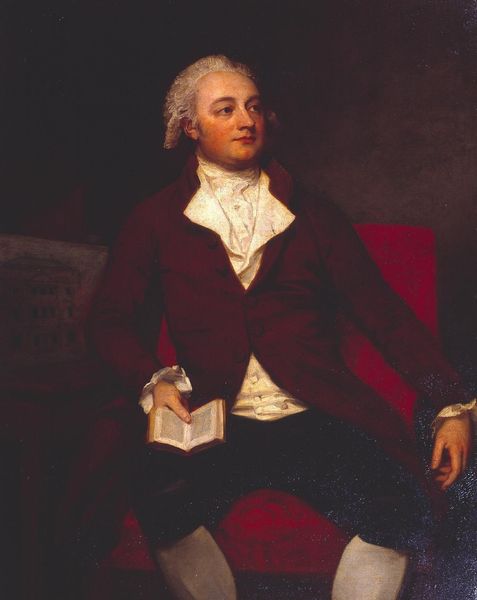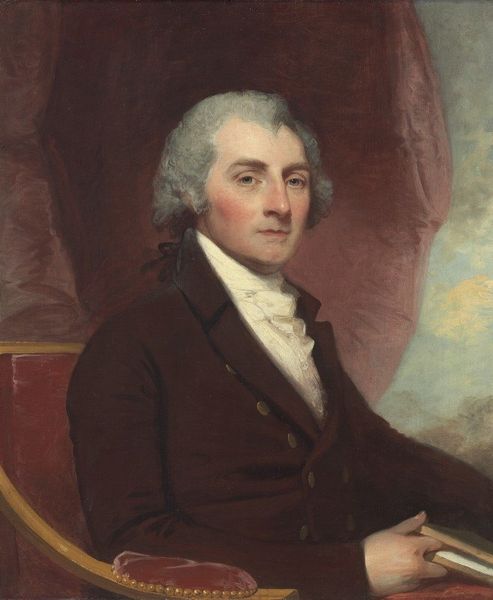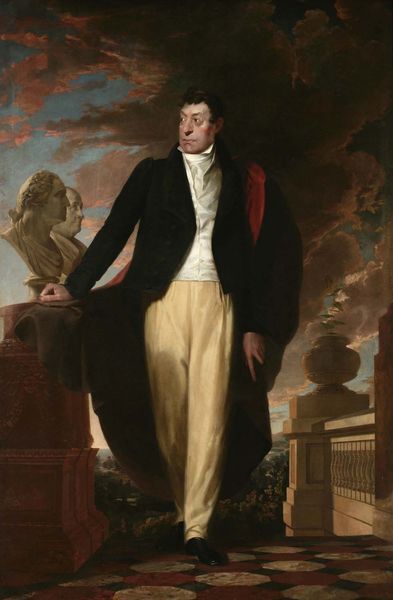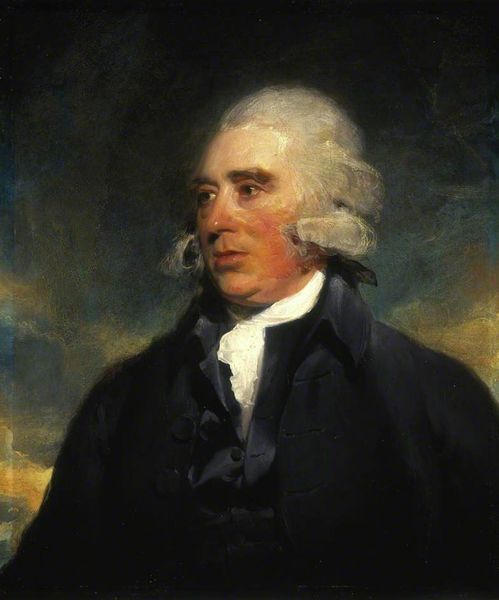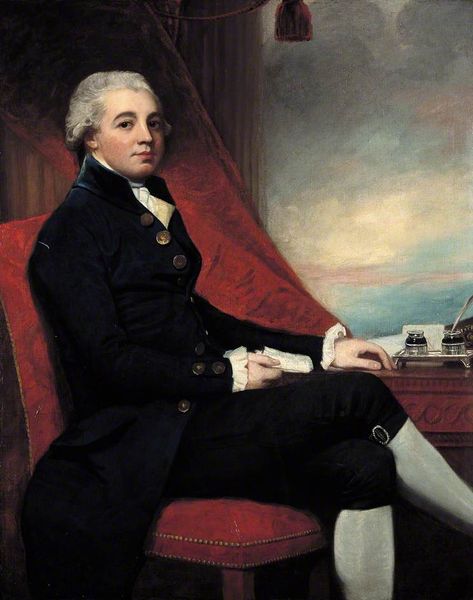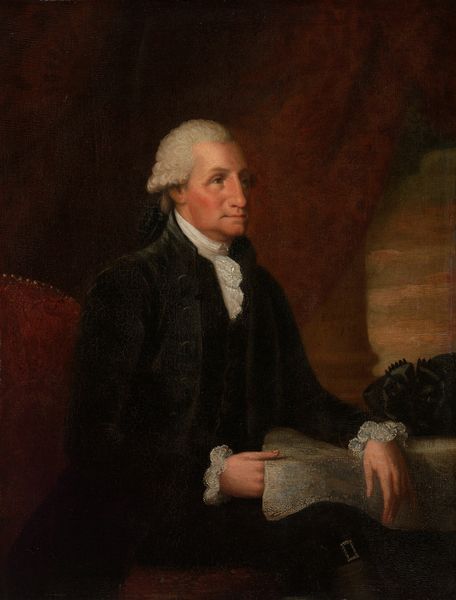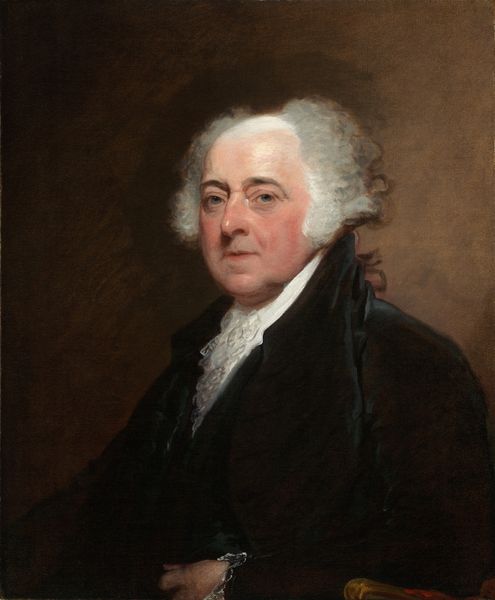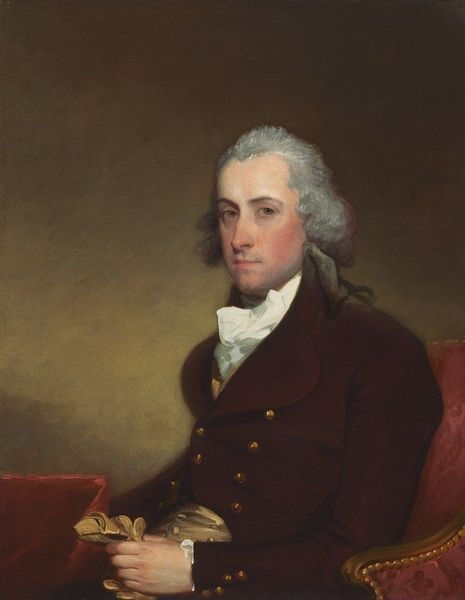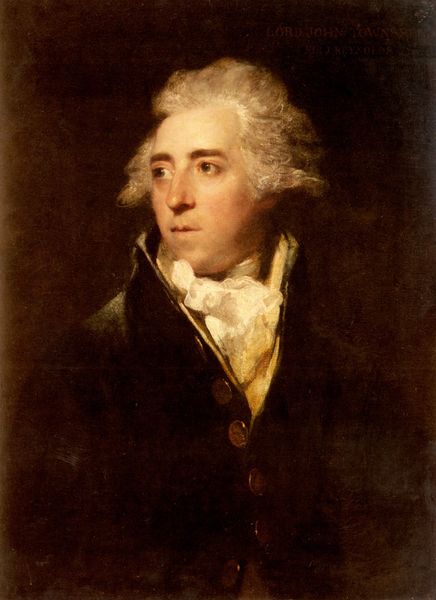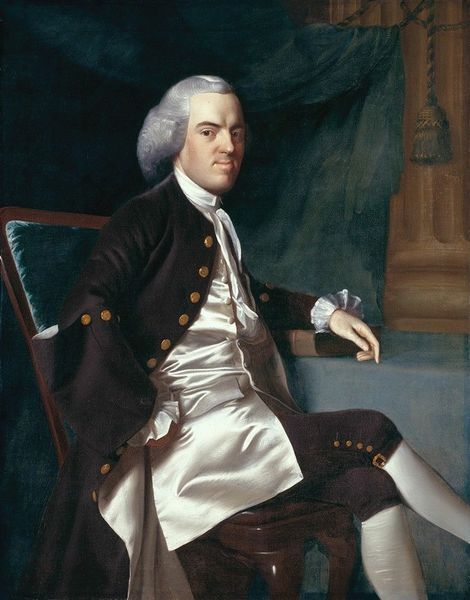
Dimensions: support: 1264 x 1003 mm Frame: H: 1502 mm, W: 1250 mm, D: 80mm
Copyright: CC-BY-NC-ND 4.0 DEED, Photo: Tate
Curator: Here we have Benjamin West’s imposing portrait of Sir Thomas Beauchamp-Proctor, which now resides in the Tate Collections. Editor: He looks rather…stoic, doesn’t he? Almost as if he's been carved from marble. The red curtain behind him feels like a stage, doesn't it? Curator: Yes, West was quite adept at constructing these images of power, focusing on the textures of fabrics and the subtle gradations of skin tone. His brushstrokes reveal a careful layering of paint to build up the form. The manufacture of such a piece for someone of Beauchamp-Proctor's status speaks volumes about social hierarchy. Editor: Definitely a portrait meant to project authority, wouldn’t you say? I can almost feel the weight of expectation on his shoulders… or perhaps it's just that heavy coat! Curator: Indeed. The production of this portrait was as much a social act as an artistic one. Editor: It leaves me pondering the silent narratives within, all of this power, and all of this… red. Curator: A fitting end to our observation, then, don't you think?
Comments
tate 8 months ago
⋮
http://www.tate.org.uk/art/artworks/west-sir-thomas-beauchamp-proctor-bt-n05264
Join the conversation
Join millions of artists and users on Artera today and experience the ultimate creative platform.
tate 8 months ago
⋮
This portrait shows Sir Thomas Beauchamp-Proctor (1756-1827), 2nd Baronet of Langley Park, Norfolk. The portrait of his wife, Mary Palmer, can be seen on the other end of this wall. Having recently completed the ‘grand tour’ of the most important cultural sites in Europe, Sir Thomas is shown in a van Dyckian composition, leaning nonchalantly on his cane set against a classical column and richly decorated curtain. Benjamin West was an American artist; born in Pennsylvania, he arrived in London in 1763 where he achieved great success, becoming President of the Royal Academy. Gallery label, February 2010
